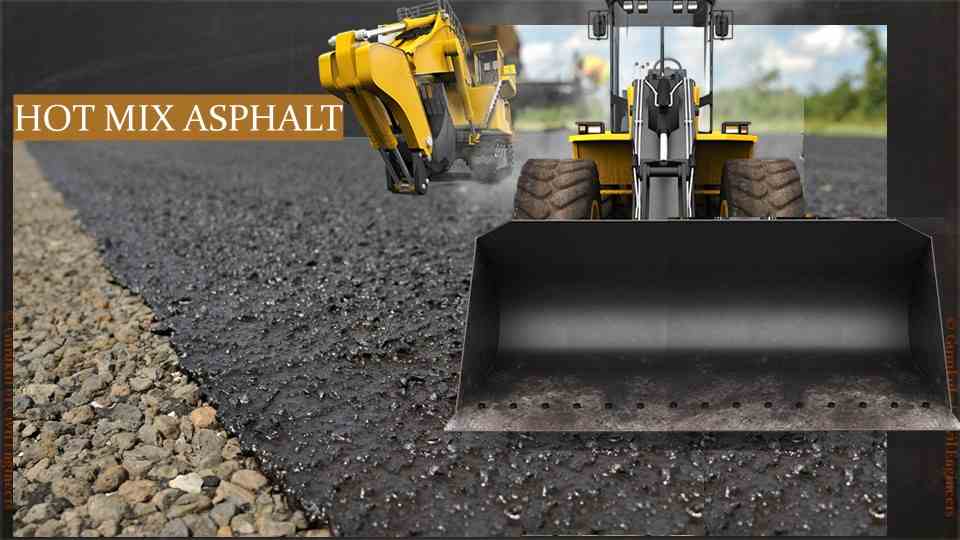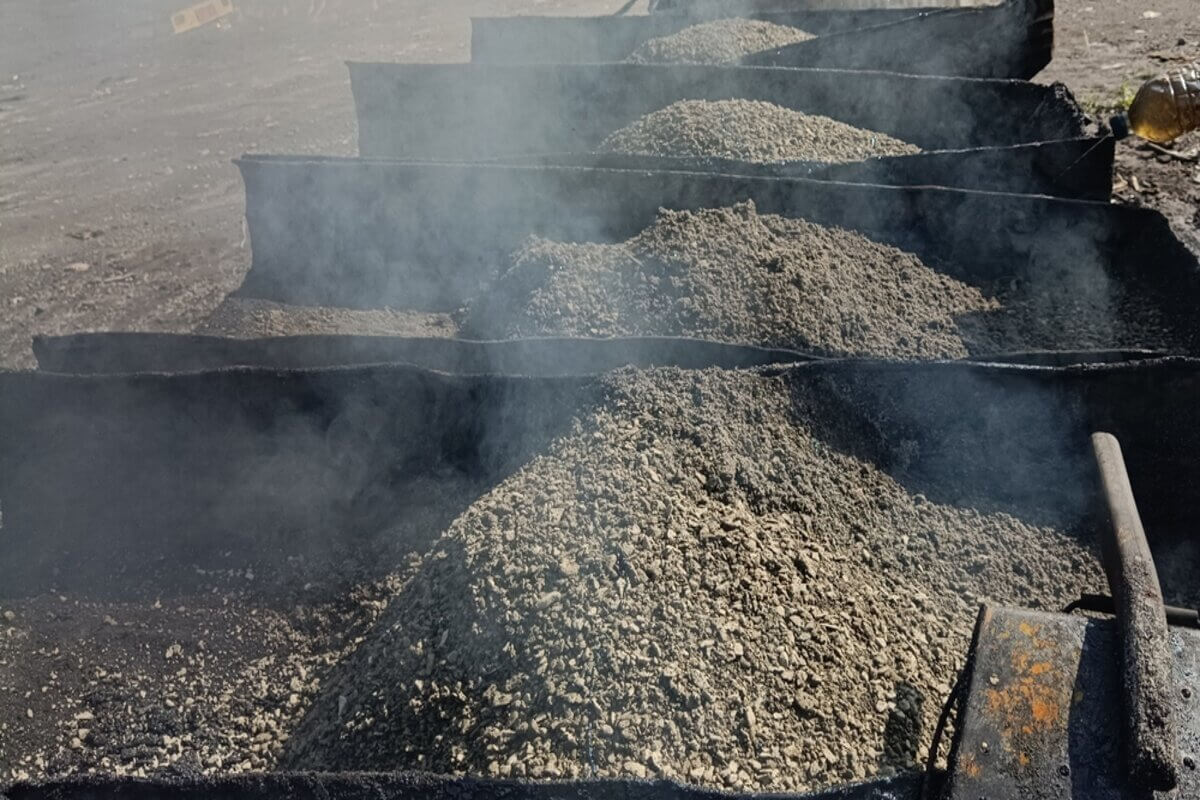Change Your Home's Landscape with Hot Mix Asphalt Paving Excellence
Change Your Home's Landscape with Hot Mix Asphalt Paving Excellence
Blog Article
Opening the Tricks of Warm Mix Asphalt Innovation
Discovering the midsts of warm mix asphalt technology uncovers a world where accurate formulas and careful procedures converge to shape our roads and infrastructure. The fusion of fillers, aggregates, and binders isn't just a construction job yet a critical orchestration of durability and performance. As we peer right into the detailed dance of components, a tapestry of resilience and sustainability unravels. What exists below this surface of asphaltic mastery, and what keys wait to be revealed in the realm of leading technologies?
Relevance of Warm Mix Asphalt
Hot Mix Asphalt plays an important role in contemporary infrastructure growth due to its longevity and cost-effectiveness. As the most generally utilized leading material for roadways, highways, and parking area, Hot Mix Asphalt uses a series of benefits that add to its value in construction jobs. One vital advantage is its capability to withstand heavy website traffic loads and harsh weather, offering a trustworthy and long-lasting surface for transport networks. In Addition, Warm Mix Asphalt is cost-effective in both initial building and lasting upkeep, making it a preferred option for lots of framework projects.
The toughness of Hot Mix Asphalt stems from its composition, which includes accumulations, binder, and filler products that are thoroughly selected and blended to meet specific efficiency requirements. On the whole, the value of Warm Mix Asphalt in facilities development can not be underrated, as it continues to be a keystone of contemporary construction methods.
Parts of Asphalt Mixes
The structure of asphalt mixes includes meticulously chosen accumulations, binder, and filler materials that are critical for accomplishing specific efficiency needs. Aggregates are the main component of asphalt mixes, giving stamina and security. These aggregates can be all-natural, such as crushed rock or crushed rock, or synthetic, like recycled products from old sidewalks. The binder, typically bitumen or asphalt concrete, holds the accumulations with each other and offers adaptability and sturdiness to the mix. The choice of the binder is vital as it straight influences the mix's efficiency in various climate condition. Fillers, such as moisturized lime or Rose city cement, are utilized to improve the mix's workability and aging resistance. Angled Parking.
The mix and percentage of these components play a significant role in identifying the high quality and efficiency of the asphalt mix. Engineers carefully develop the mix to satisfy particular demands, thinking about aspects like web traffic volume, climate problems, and sidewalk life-span. Correct choice and harmonizing of aggregates, binder, and fillers are vital for producing long lasting, resilient asphalt pavements.
Combining and Manufacturing Methods

When the accumulations are chosen, the binder, commonly asphalt concrete, is included to bind the products with each other. The binder's high quality and amount substantially influence the mix's toughness, adaptability, and resistance to ecological variables. In addition, fillers like moisturized lime or Portland cement may be incorporated to boost details features of the asphalt mix, such as helpful hints its workability or moisture resistance.
Throughout manufacturing, the accumulations and binder are warmed, typically in between 250-325 ° F(121-163 ° C ), to promote blending and guarantee proper finish of the accumulations. The mixing procedure has to be detailed to accomplish a homogeneous mixture that advertises the preferred performance features of the asphalt. Various techniques, such as set mixing or drum blending, are utilized to achieve premium and consistent asphalt blends for building jobs.
Elements Influencing Asphalt Efficiency
Variables influencing asphalt efficiency incorporate a range of variables that affect the durability, longevity, and general top quality of asphalt pavements. One essential variable is the quality of materials utilized in the asphalt mix.

Style factors to consider, such as pavement thickness and drain, are crucial in ensuring the long-lasting performance of the asphalt pavement. By very carefully taking into consideration these factors, contractors and engineers can optimize asphalt efficiency and boost the solution life of sidewalks.
Lasting Practices in Asphalt Innovation

In addition, the growth of warm-mix asphalt (WMA) modern technologies has gained traction in current years. WMA enables the manufacturing and placement of asphalt mixes at reduced temperature levels compared to traditional hot-mix asphalt, causing lowered energy consumption and greenhouse gas exhausts. The usage of porous asphalt mixes can aid alleviate stormwater runoff issues by enabling water to infiltrate via the pavement and right into the ground, advertising natural water purification and charge processes. By applying these sustainable techniques, my website the asphalt market can add to developing a more resilient and eco pleasant facilities network.
Conclusion
To conclude, warm mix asphalt technology plays a critical role in modern facilities advancement as a result of its durability and cost-effectiveness. By thoroughly balancing elements, utilizing correct blending strategies, and taking into consideration different aspects, designers can develop high-grade asphalt blends that hold up against rush hour loads and harsh climate condition. Welcoming lasting practices, such as utilizing recycled materials and warm-mix modern technologies, better boosts the ecological kindness of asphalt innovation.
Mixing and manufacturing techniques in warm mix asphalt modern technology entail the accurate combination and processing of accumulations, binder, and fillers to produce a long lasting and high-performance asphalt mix.Factors affecting asphalt efficiency encompass a More about the author range of variables that influence the longevity, durability, and overall quality of asphalt sidewalks. Sustainable techniques in asphalt technology encompass numerous efforts aimed at lowering the environmental effect of asphalt production and paving procedures. By integrating reclaimed asphalt sidewalk (RAP) and recycled asphalt shingles (RAS) right into new asphalt blends, the market can dramatically decrease the intake of raw materials and power, while likewise lowering garbage dump waste.
WMA enables for the production and placement of asphalt mixes at reduced temperatures contrasted to standard hot-mix asphalt, resulting in reduced energy intake and greenhouse gas discharges.
Report this page